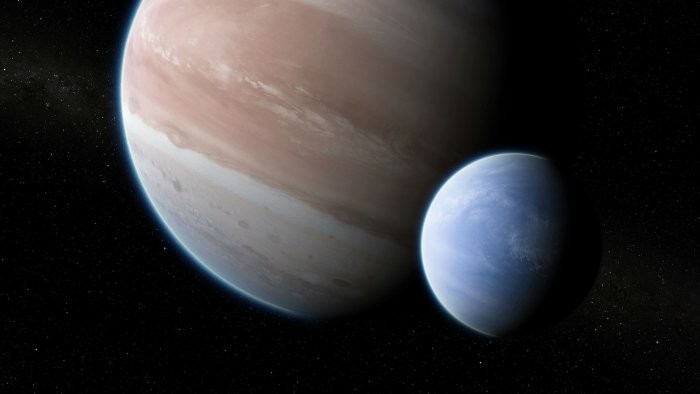A team of researchers announces that they have possibly isolated a second extrasolar moon orbiting a giant planet. If the discovery is confirmed (which could take several years), it could mean that these exomoons are as common in the Universe as exoplanets.
In the past three decades, astronomers have isolated more than 4,000 confirmed exoplanets . These worlds show remarkable diversity, from highly eccentric giants to very compact systems involving rocky planets. In order to better understand the formation and evolution of these systems, several teams of astronomers are also focusing on the existence and nature of potential moons.
Given the abundance of these objects in our system, it is indeed reasonable to assume others could evolve around exoplanets.
Most extrasolar planets have been isolated using the transit method (a planet passes in front of its star and blocks some of its light). However, for a long time, no extrasolar moon was detected with this method, the variations in luminosity being almost elusive .
However, the situation changed four years ago. At the time, a team of astronomers led by David Kipping of Columbia University announced that they may have discovered the very first extrasolar moon (or exomoune). Follow-up operations carried out with Hubble a few months later seemed to confirm its existence, 8,000 light years from Earth.
As part of a new study published in Nature Astronomy, the same team announces that it may have discovered a second object of this kind. According to the researchers, who rely on Kepler data, this moon would evolve in orbit around the planet Kepler 1708b, 5,500 light years from Earth towards the Cygnus and Lyra constellations.
If the first moon proposed four years ago would be about the size of Neptune, this one would be three times smaller (but still more than the Earth). Both would be composed solely of gas accumulated under the gravitational attraction caused by their enormous size. If the hypothesis is correct, these moons may have even started life as planets, before eventually being "snatched up" by their respective planet.

Observations from other space telescopes will obviously be needed to confirm the discovery, but that could take time. Four years later, the "first discovery" indeed continues to be debated among the scientific community, with the initial observations yet to be repeated.
However, the search is worth it. A few decades ago, the existence of exoplanets had been greeted with the same skepticism. Their study, however, could revolutionize our understanding of the formation of planetary systems.